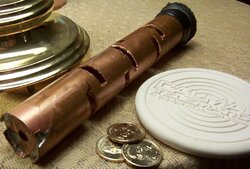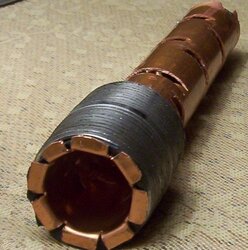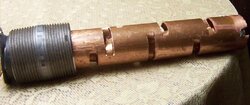Jebatty - you said somewhere your tank is 20’ long? What diameter is it? It should be about 3’ if I am doing the math right…Also Jebatty can you link me to the thread that discusses what you used for temp readings? I think I remember you are using surface mounted thermocouples? What device shows the temp readings? Money is very tight for me this year so I need to figure out a way to get more accurate tank temps. For now I can charge based on return temps and psi.
3' diameter, correct. A couple of ways to go that are fairly "inexpensive." First, for monitoring only and not data logging, you can use digital panel meters. I use
THESE, with two external sensors, and can set the meter to alternate between the two readings, or just set up to show one reading. For monitoring only, I have 7 of these, single temp reading only: 1/3 of the way down from top of tank, 2/3 of the way down, and bottom of tank; boiler supply; boiler return (after the Termovar), radiant supply, and radiant return. The meters come with sensors. Total cost of the 7 is about $85. I then also have a K-type panel meter to read the internal stack temp, about another $15.
Second, to monitor and data log, both done on a Win-PC computer, I use the
ONE WIRE. The cost for this and 16 sensors is about $150. Additional wired sensors are about $6 each, which I recommend, because to buy the DS18B20's separately (which I have done), wire them up, time involved, etc., the pre-wired are a good price. You also can add more sensors as you may want to monitor/data log other points in your system.
Neither of the above control my system, they just monitor or monitor/log.
I think the key to good charging/stratification, as others have suggested, is large ports and slow flow, charge at top and return from bottom. I do both of these at one end of my tank, with both ports horizontal, top port outlet extends 18" into the tank, bottom port is flush with the tank, ports 6" down from top and 6" up from bottom (hard to weld in ports if they are closer to top or bottom due to curvature of the tank). As my prior posts show, stratification is excellent.




